Celebrate Krishna Janmashtami is a joyous festival that marks the birth of Lord Krishna, one of the most beloved deities in Hinduism. This vibrant celebration takes place across India and in many parts of the world, bringing together devotees who sing, dance and reenact scenes from Krishna’s life. If you’re looking to immerse yourself in the festive spirit of Janmashtami in 2024, here are some of the best places to visit:
1. Mathura, Uttar Pradesh
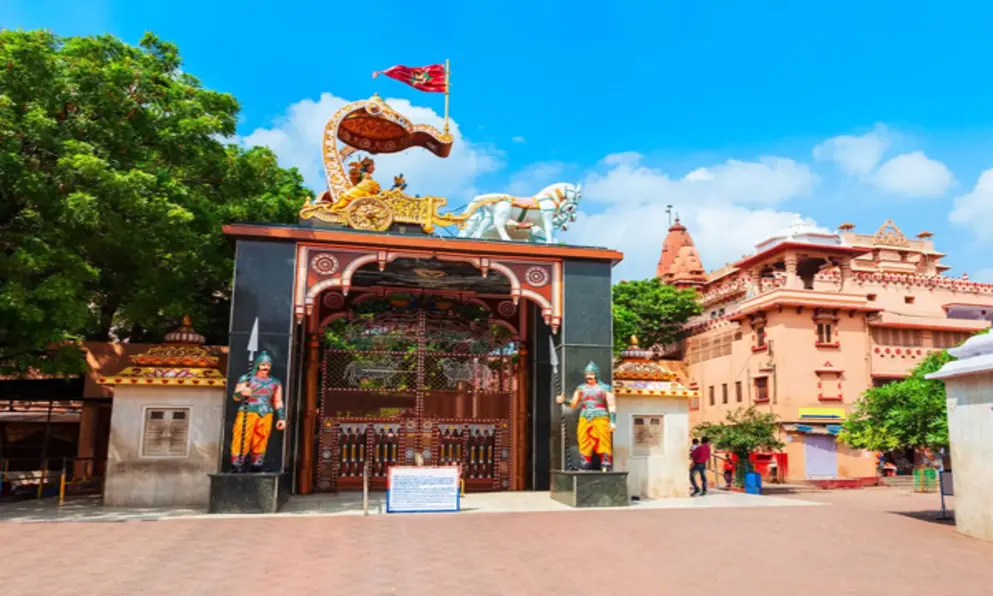
Mathura, a city in Uttar Pradesh, India, is revered as the birthplace of Lord Krishna, one of Hinduism’s most beloved deities. Located on the banks of the Yamuna River, Mathura is a major pilgrimage site, attracting devotees and tourists alike. The city’s ancient history is intertwined with the stories of Krishna, and its vibrant culture reflects this spiritual heritage.
Key attractions include the Shri Krishna Janmabhoomi temple, believed to be the exact birthplace of Krishna, and the Dwarkadhish Temple, known for its elaborate architecture and lively celebrations. Mathura is also famous for its Holi festival, celebrated with great enthusiasm, where colors, music, and devotion fill the streets.
The city offers a rich experience of history, religion, and traditional Indian culture, making it a significant destination for spiritual seekers and history enthusiasts.
Click here for the location map
2. Vrindavan, Uttar Pradesh
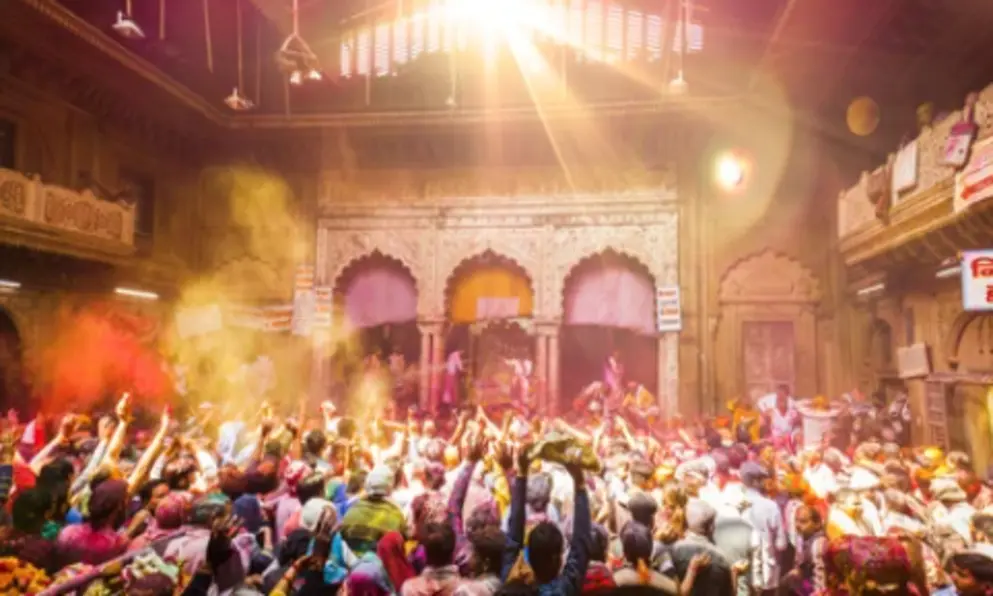
Vrindavan, located in Uttar Pradesh, India, is a sacred town deeply associated with Lord Krishna. Renowned for its vibrant religious and spiritual atmosphere, Vrindavan is believed to be the place where Krishna spent his childhood and performed many of his divine pastimes, making it a significant pilgrimage site for devotees.
The town is dotted with hundreds of ancient temples, each dedicated to different aspects of Krishna’s life, with the Banke Bihari Temple and ISKCON Temple being the most famous. The Yamuna River, which flows through Vrindavan, adds to its spiritual significance, and devotees often take holy dips in its waters. Vrindavan’s narrow streets, bustling with pilgrims, are filled with chants, devotional songs, and the aroma of incense, creating a uniquely peaceful ambiance.
The town is particularly famous for its celebration of Holi, the festival of colors, where devotees gather in large numbers to play with colors in a grand expression of devotion. Alongside its religious importance, Vrindavan is also known for its connection to the Bhakti movement and saints like Chaitanya Mahaprabhu and Meera Bai, who have contributed to the town’s devotional culture.
Click here for the location map
See more places :- Places to Visit in Tadepalligudem | Places to Visit in Arsikere
3. Dwarka, Gujarat
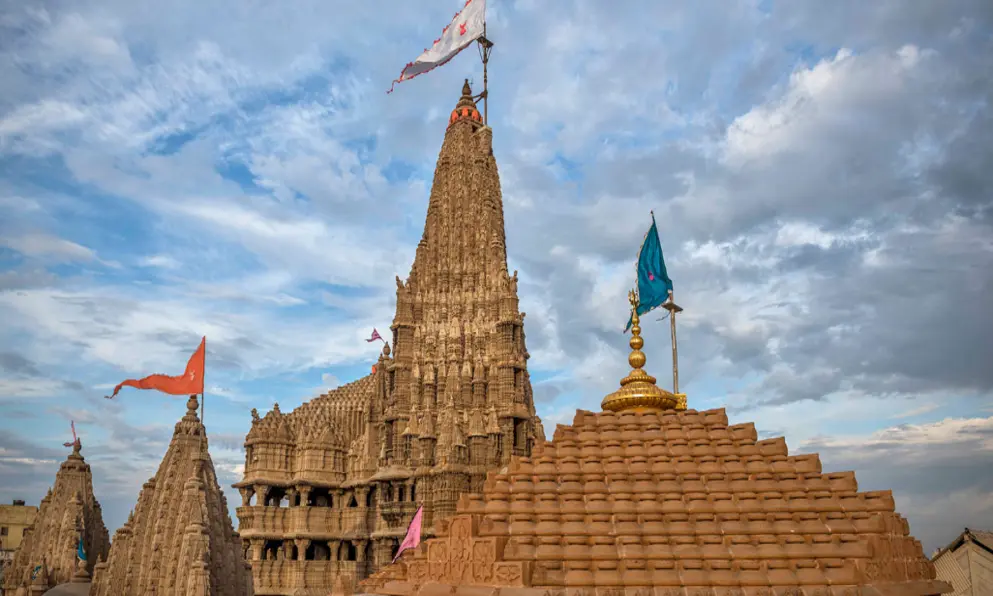
Dwarka, located on the western coast of Gujarat, is a sacred city with deep spiritual significance in Hindu mythology. It is believed to be the ancient kingdom of Lord Krishna, who is revered as one of the most important deities in Hinduism. The city is part of the Char Dham pilgrimage, making it a key destination for devotees. The Dwarkadhish Temple, dedicated to Lord Krishna, is the city’s focal point, attracting thousands of visitors every year. With its rich history, coastal beauty, and religious importance, Dwarka is a blend of mythology and modern spirituality.
Dwarka, situated on the banks of the Gomti River and overlooking the Arabian Sea, is one of India’s oldest cities. According to ancient texts, it was established by Lord Krishna himself after leaving Mathura and is considered one of the Sapta Puris, the seven holy cities of India. The city holds great religious importance as it is believed to be the site where Lord Krishna ruled over his kingdom.
The Dwarkadhish Temple, also known as the Jagat Mandir, stands as the heart of Dwarka’s spiritual landscape. This five-story temple, supported by 72 pillars, is an architectural marvel with intricate carvings that depict scenes from Krishna’s life. The temple’s shikhara (spire) rises about 51 meters, and the flag on top of the temple is changed five times a day, symbolizing the ever-vigilant presence of Lord Krishna.
Click here for the location map
4. Mumbai, Maharashtra
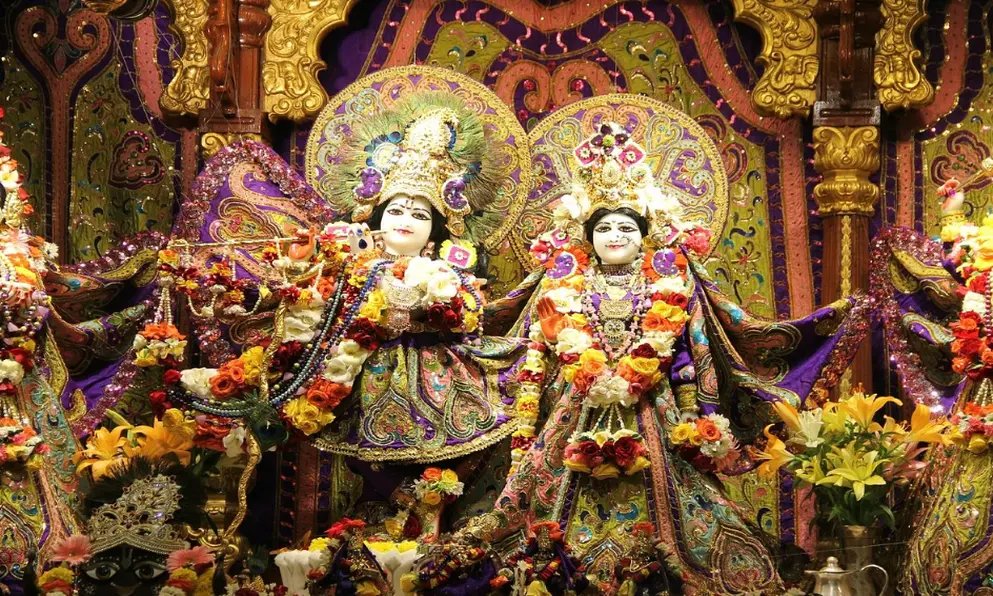
In Mumbai, celebrate Krishna Janmashtami with a unique twist. The city is famous for its “Dahi Handi” celebrations, where teams of young men form human pyramids to break a pot of curd hung high above the ground, reenacting Krishna’s playful side as a butter thief. This event, along with the festive atmosphere in temples like the ISKCON Temple in Juhu, makes Mumbai an exciting place to celebrate.
One of the most popular places for Janmashtami celebrations in Mumbai, ISKCON Juhu attracts thousands of devotees. The temple is beautifully decorated, and the celebrations include bhajans, aarti, and cultural programs, culminating in a grand midnight celebration marking Lord Krishna’s birth.
Click here for the location map
5. Puri, Odisha

Puri, known for the Jagannath Temple, is another wonderful place to celebrate Krishna Janmashtami. The temple hosts special prayers and rituals, and devotees come together to honor Lord Krishna. The spiritual ambiance and the presence of the sea add a unique charm to the celebrations in Puri.
The Jagannath Temple in Puri, Odisha, is one of the most revered and ancient Hindu temples in India. Dedicated to Lord Jagannath, an incarnation of Lord Vishnu, the temple is part of the Char Dham pilgrimage, attracting millions of devotees each year. Built in the 12th century by King Anantavarman Chodaganga Deva, the temple’s architecture is a stunning example of Kalinga style, with its towering spire standing at 65 meters.
The temple is renowned for its annual Rath Yatra, where the deities—Jagannath, Balabhadra, and Subhadra—are taken out in grand chariots, an event celebrated with immense devotion. Unique rituals, such as the mysterious way the flag atop the temple always flies in the opposite direction of the wind, add to the temple’s mystique. Non-Hindus are not allowed inside the temple, but the grandeur and spiritual significance of Jagannath Temple remain unparalleled, making it a vital religious and cultural symbol of Odisha.
Click here for the location map
See other places:- Places to Visit in Pimpri-Chinchwad | Places to Visit in Mainpuri
6. Udupi, Karnataka
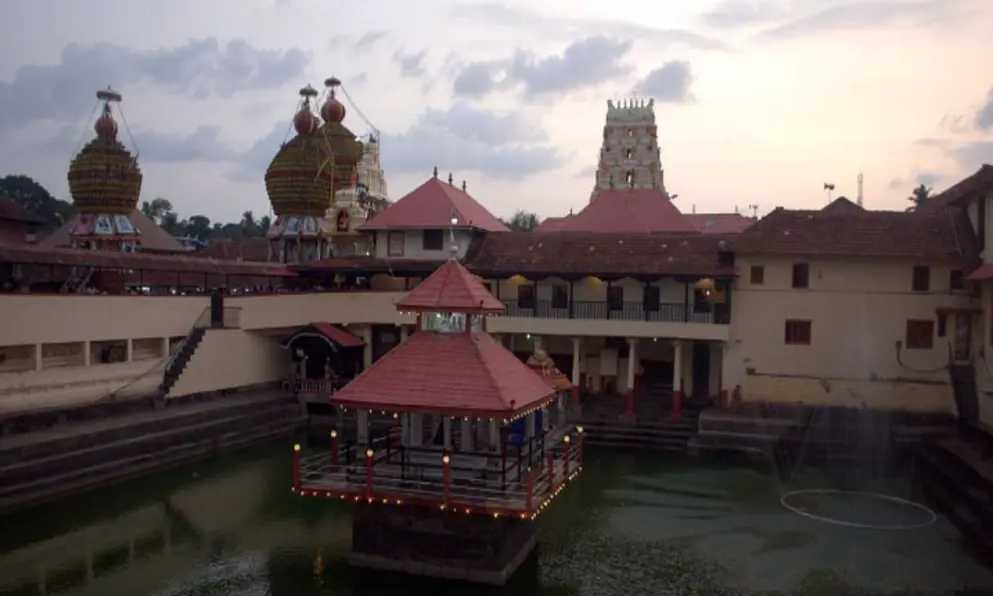
Udupi, a small town in Karnataka, is famous for its Krishna Temple, where celebrate Krishna Janmashtami with great devotion. The temple rituals, including the chanting of hymns and the decoration of the Krishna idol, create a serene and divine atmosphere. The town’s traditional celebrations attract visitors from all over the country.
The Krishna Temple in Udupi, Karnataka, is a revered Hindu pilgrimage site dedicated to Lord Krishna. Founded in the 13th century by the philosopher-saint Madhvacharya, the temple is renowned for its unique idol of Lord Krishna, which is adorned with a churning rod and rope, symbolizing his childhood activities. The temple’s architecture is traditional, with a central sanctum and a surrounding courtyard.
One of the temple’s distinctive features is the “Kanakana Kindi,” a small window through which devotees can view the deity. This window is associated with the legend of Kanakadasa, a devotee who was granted a vision of Krishna through it after being denied entry to the temple due to his caste. The temple is also known for its rich spiritual heritage, with daily rituals, vibrant festivals like celebrate Krishna Janmashtami, and the renowned Udupi cuisine offered as prasadam to devotees. The Krishna Temple in Udupi remains a symbol of devotion, tradition, and cultural significance in Karnataka.
Click here for the location map
7. Delhi
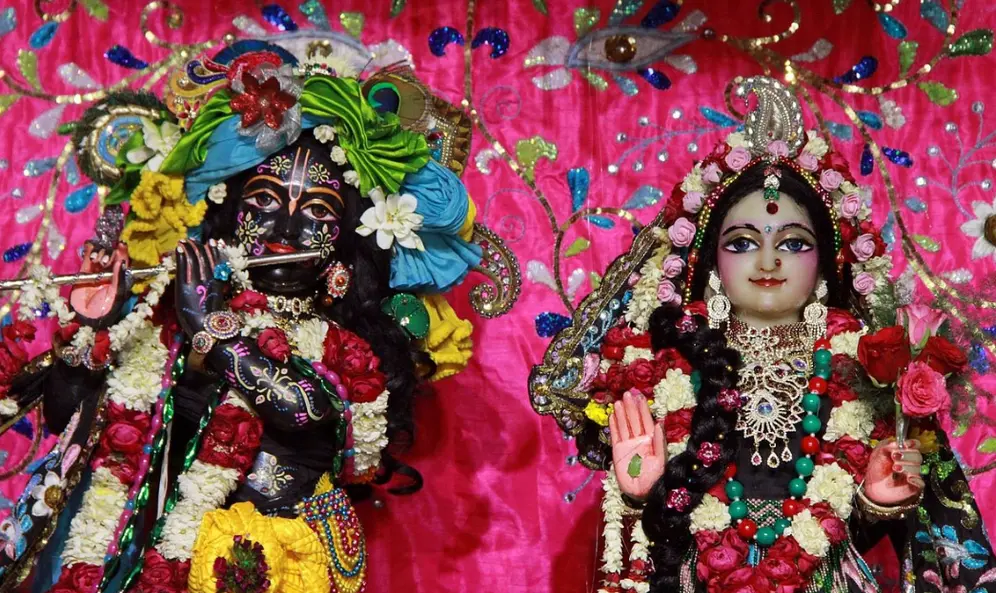
The capital city of Delhi also hosts grand Janmashtami celebrations. The ISKCON temples in Delhi, especially the one in East of Kailash, are beautifully decorated, and thousands of devotees participate in the festivities. Cultural programs, including plays depicting Krishna’s life, are held throughout the city.
ISKCON (International Society for Krishna Consciousness) temples in Delhi are renowned spiritual centers dedicated to Lord Krishna. The most famous ISKCON temple in Delhi is the ISKCON Temple at Hare Krishna Hill in East of Kailash. This temple, with its grand architecture and serene ambiance, is a significant attraction for both devotees and tourists. The temple complex houses beautiful deities of Radha-Krishna and offers daily aartis, kirtans, and lectures on Bhagavad Gita. The spiritual atmosphere is enhanced by the chanting of the Hare Krishna mantra, drawing people seeking peace and devotion.
Apart from the East of Kailash temple, Delhi also hosts other ISKCON centers, such as the ISKCON Dwarka and ISKCON Punjabi Bagh, which offer similar spiritual experiences. These temples focus on spreading the teachings of Lord Krishna through various programs, including spiritual discourses, festivals, and prasadam (sanctified food) distribution.
ISKCON Delhi plays a pivotal role in promoting the principles of Bhakti Yoga and providing a space for meditation and spiritual growth amidst the bustling city life.
Click here for the location map
See other places:- Places to Visit in Chilakaluripet | Places to Visit in Madanapalle
8. Nathdwara, Rajasthan
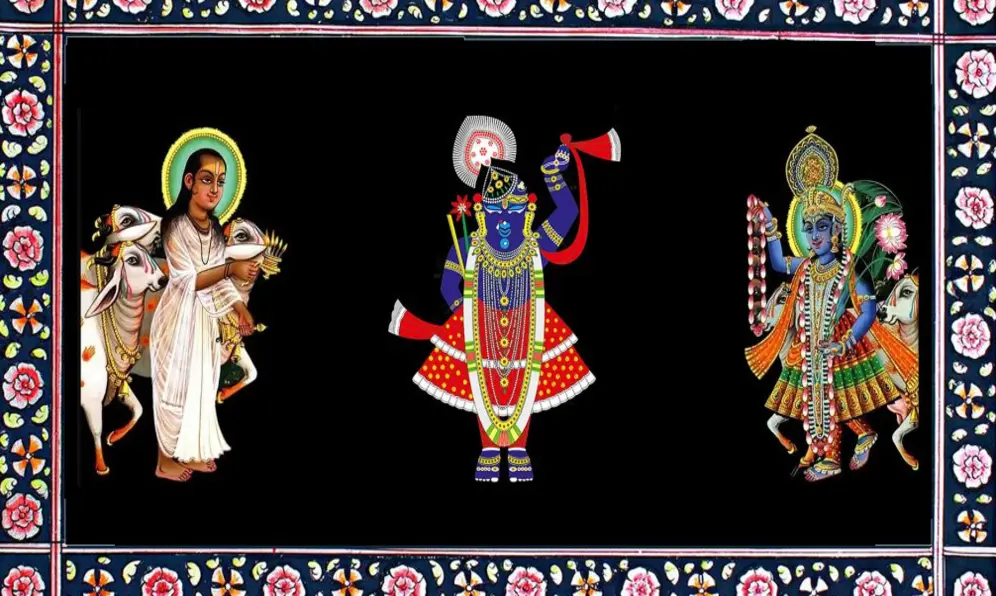
Nathdwara, home to the famous Shrinathji Temple, is another place where celebrate Krishna Janmashtami with much fervor. The temple is dedicated to Lord Krishna in his child form, and the celebrations include special prayers, music, and the beautiful decoration of the deity. The town’s vibrant atmosphere makes it a great destination for Janmashtami.
The Shrinathji Temple in Nathdwara, Rajasthan, is a renowned pilgrimage site dedicated to Lord Krishna, specifically in his form as Shrinathji, which depicts the deity lifting Mount Govardhan. This temple is a significant center for the Pushtimarg sect, founded by the saint Vallabhacharya in the 16th century. Located 48 kilometers from Udaipur, the temple’s architecture reflects traditional Rajput style, with intricate carvings and a vibrant atmosphere.
Devotees flock to this temple for its divine idol, made of black marble, and the elaborate rituals performed throughout the day. The temple celebrate Krishna Janmashtami festivals, with Janmashtami and Diwali being the most prominent. The temple’s charm lies not only in its spiritual significance but also in the cultural and artistic heritage it preserves, making it a must-visit for both pilgrims and tourists.
Click here for the location map
Conclusion
celebrate Krishna Janmashtami is a time of joy and devotion, and celebrating it in one of these special places can be a deeply spiritual experience. Whether you prefer the grand festivities of Mathura and Vrindavan or the unique traditions of Mumbai, each place offers a unique way to connect with the divine and celebrate the birth of Lord Krishna.
Frequently Asked Questions
On this day, people honor Lord Krishna by worshiping him as Shaligram or Laddu Gopal. Some observe fasts and offer special prayers. For Janmashtami, 56 different dishes, called Chhappan Bhog, are presented to Lord Krishna.
celebrate Krishna Janmashtami is the biggest festival in the Braj area of northern India, particularly in Mathura, where Hindu beliefs say Krishna was born, and in Vrindavan, where he spent his childhood.
Meat and Non-Vegetarian Foods:- During Janmashtami fasting, it’s often recommended to avoid meat, eggs, fish, and other non-vegetarian foods.
Onions and Garlic:- It’s advised to skip onions and garlic because they are thought to be tamasic. These ingredients are usually left out of the special festival dishes or bhog.
Caffeinated Drinks:- It’s suggested to steer clear of coffee and tea, as they might make you feel hungry or dehydrated. Drinking too much can also lead to acidity, heaviness, and headaches.
Fried and Oily Foods:- It’s best to avoid excessive fried and oily foods because they are unhealthy and can lead to cholesterol issues.
Dahi Handi Competitions: Boys create human pyramids to reach and break a clay pot filled with curd, which is hung high. This event highlights unity and teamwork.
Cultural Events: Colleges organize activities such as rangoli designs, face painting, mehendi, and performances. Students may dress up as characters from Krishna’s stories, like Krishna, Radha, Vasudeva, or baby Krishna.
Devotional Songs: People sing songs dedicated to Lord Krishna to mark the festival.
Dramatic Reenactments: Scenes from Krishna’s life are performed in dramatic reenactments.
Artistic Displays: People showcase their artistic skills.
Temples also join in the celebration of Janmashtami.
In Pune, India, celebrate Krishna Janmashtami with a big event organized by the Shri Krishna Janmotsav Mandal. The celebration features cultural performances, bhajans (devotional songs), and a lively procession.
In Maharashtra, Janmashtami is also known as Dahi Handi, a festival held around August. During this festival, people break clay pots filled with curd, rice batter, and butter. The highlight of the event is when groups of people form human pyramids to reach and break the pot. This tradition represents unity, bravery, faith, and the victory of good over evil.
Lord Krishna’s favorite foods are:
Butter and Cow’s Milk: Basic dairy items Krishna loved.
Maakhan Mishri: A dish made with fresh butter and rock sugar.
Mal pua: Sweet Indian pancakes made from flour, milk, and sugar, often topped with pistachios and saffron.
Rasmalai: Soft cottage cheese balls cooked in thick milk syrup and filled with dry fruits like pistachios and almonds.
Makhana Paag: A special prasad made with makhana, which is high in calcium, often prepared for Janmashtami and new mothers.
Krishna also enjoyed simpler foods like flattened rice (chuda), milk, butter, and khichdi. In the Hindu scriptures, the Gita, Krishna says, “If offered fruit, leaf, flower, or water, I accept.” This has led scholars to believe that Krishna was a vegetarian.

